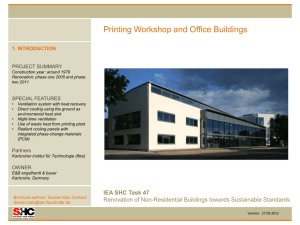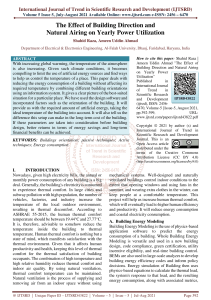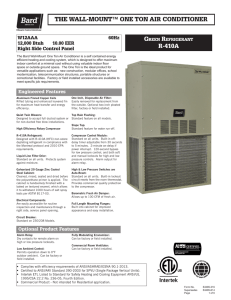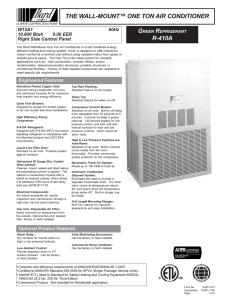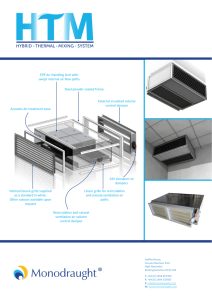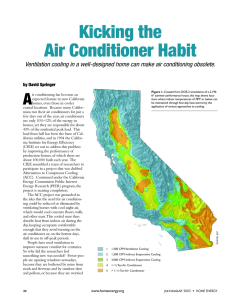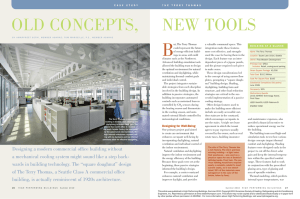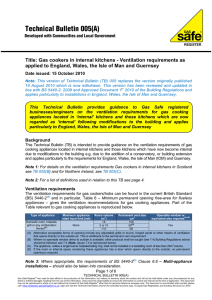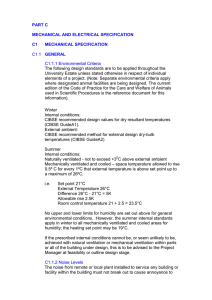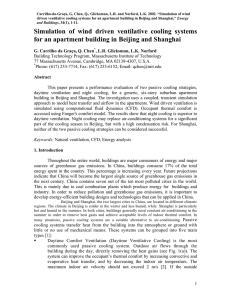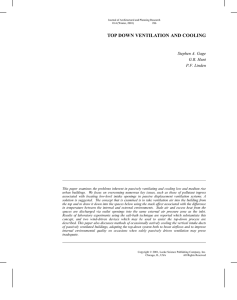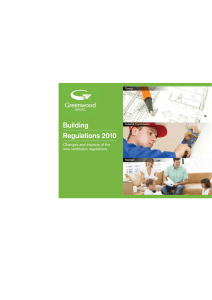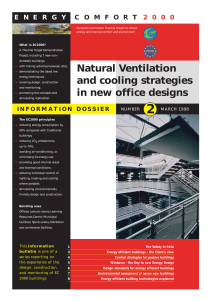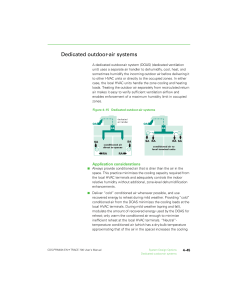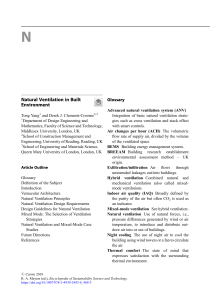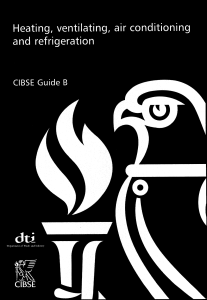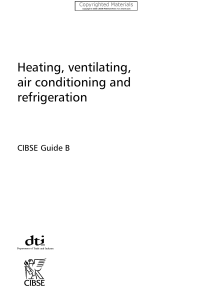Ventilation and cooling
advertisement
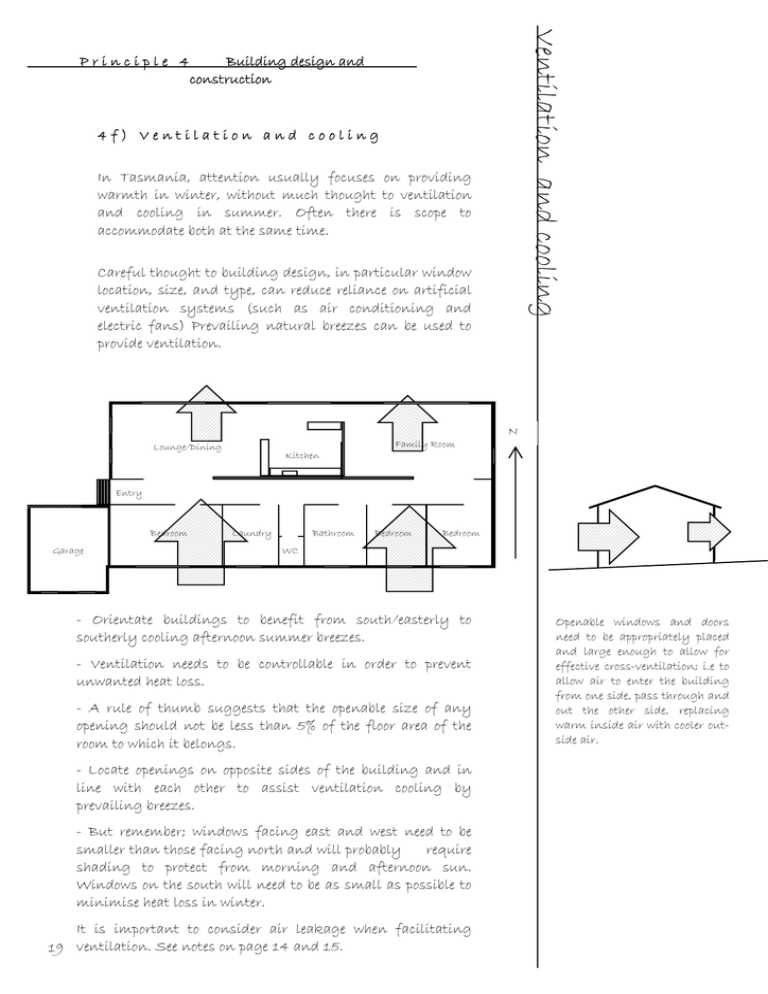
Ventilation and cooling Principle 4 Building design and construction 4f) Ventilation and cooling In Tasmania, attention usually focuses on providing warmth in winter, without much thought to ventilation and cooling in summer. Often there is scope to accommodate both at the same time. Careful thought to building design, in particular window location, size, and type, can reduce reliance on artificial ventilation systems (such as air conditioning and electric fans) Prevailing natural breezes can be used to provide ventilation. Lounge/Dining Kitchen Family Room N Entry Bedroom Garage Laundry Bathroom Bedroom Bedroom WC - Orientate buildings to benefit from south/easterly to southerly cooling afternoon summer breezes. - Ventilation needs to be controllable in order to prevent unwanted heat loss. - A rule of thumb suggests that the openable size of any opening should not be less than 5% of the floor area of the room to which it belongs. - Locate openings on opposite sides of the building and in line with each other to assist ventilation cooling by prevailing breezes. - But remember; windows facing east and west need to be smaller than those facing north and will probably require shading to protect from morning and afternoon sun. Windows on the south will need to be as small as possible to minimise heat loss in winter. It is important to consider air leakage when facilitating 19 ventilation. See notes on page 14 and 15. Openable windows and doors need to be appropriately placed and large enough to allow for effective cross-ventilation; i.e to allow air to enter the building from one side, pass through and out the other side, replacing warm inside air with cooler outside air.



